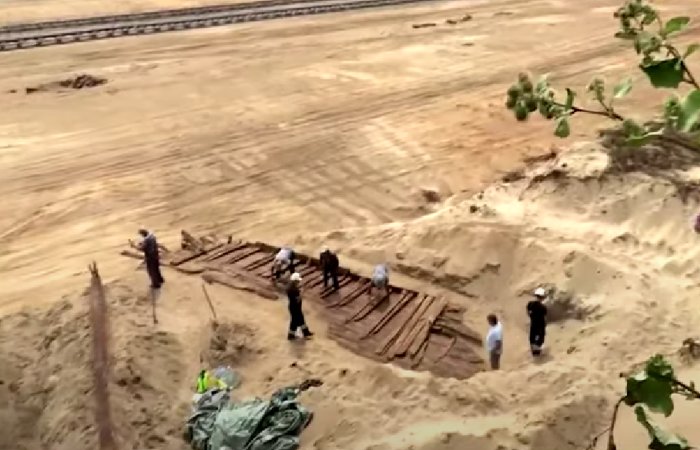Jan Bartek – AncientPages.com – Coal miners have discovered remnants of a Roman ship in Serbia. The find occurred when mining works were carried out in the Drmno open-pit mine (north-eastern Serbia), located near the Danube.

Scientists are doing their best to preserve the ancient ship. Image credit: Reuters
After learning some timber had been uncovered, experts from a nearby former Roman settlement known as Viminacium hurried to the site. It is the second such discovery in the area since 2020 and a significant archaeological discovery. Scientists are now working hard, attempting to preserve the skeleton of the ship.
According to the researchers, the ancient ship probably belonged to a group of river units that supplied the Roman city of Viminacium.
Situated on a strategic spot overlooking the junction of the rivers, Mlava and the Danube, Viminacium was a town from which the powerful Roman army went into many battles. During Hadrian’s reign in the 2nd century, Viminacium was a town with a high degree of autonomy. In the 3rd-4th century A.D., the city had about 45,000 inhabitants and had impressive buildings such as palaces, temples, hippodrome, walls, aqueducts, and baths.
The discovery of a Roman ship is not surprising, but nevertheless, an important find. Lead archaeologist Miomir Korac says the ship may date back as far as the 3rd or 4th century A.D.
“We may ᴀssume that this ship is Roman, but we are unsure of its exact age,” he told Reuters.
The wood was first sprayed with water and kept under a tarpaulin to prevent decay in the summer heat, Korac added.
“Archaeologists believe the two ships and three canoes uncovered so far in the area either sank or were abandoned at the river bank.
Mladen Jovicic, who is part of the team working on the newly-discovered ship, said moving its 13-meter hull without breaking it would be tough,” Reuters report.
“Our engineer friends … will prepare a special structure that will be lifted by a crane, and … the entire process of gradual conservation will follow,” he said.
See also: More Archaeology News
Excavations of Viminacium have been going on since 1882. Still, archaeologists estimate they have only scored 5% of the site, which they say is 450 hectares – bigger than New York’s Central Park – and unusual in not being buried under a modern city.
At present, the science team has found golden tiles, jade sculptures, mosaics and frescos, weapons, and remains of three mammoths at this fascinating site, and more discoveries will undoubtedly be reported soon.
Written by Jan Bartek – AncientPages.com Staff Writer





